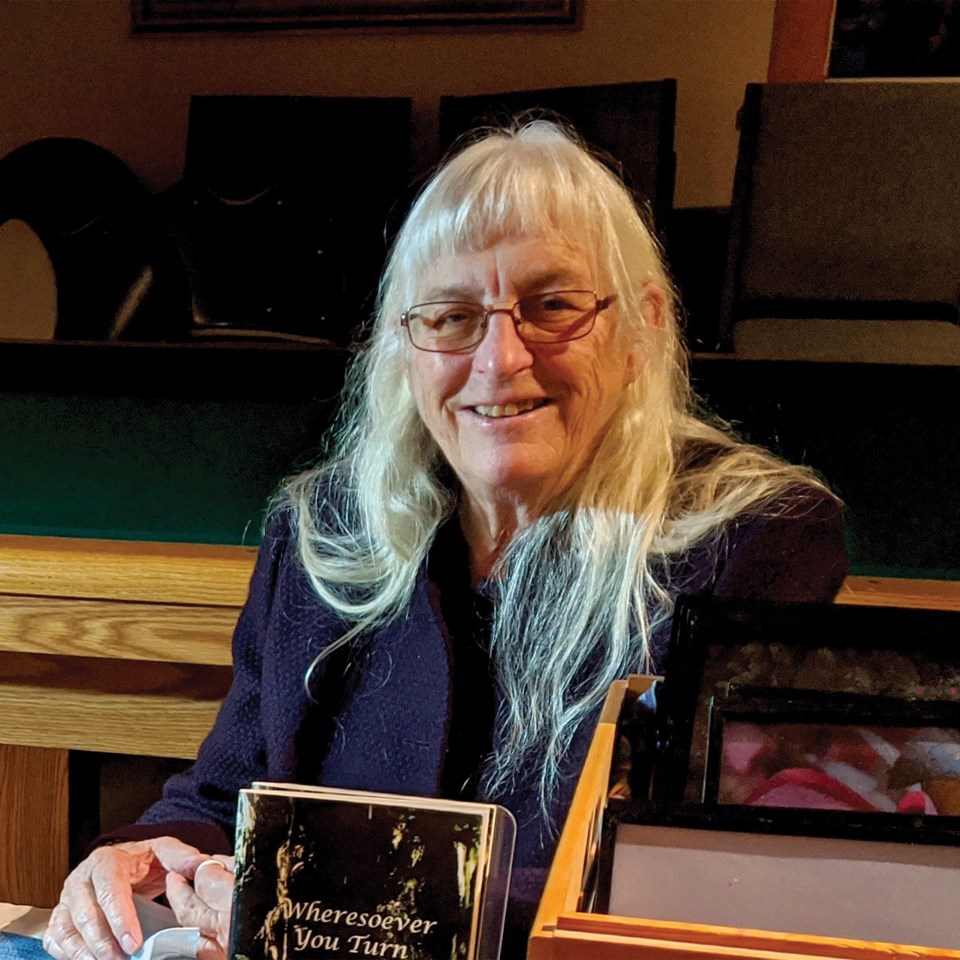A miniature exhibition space, opened at the Gibsons Public Art Gallery this month, is magnifying the accessibility of small artworks while encouraging free trade in creativity.
Located in the gallery’s west front window, the Tiny Art Gallery will each month feature a half-dozen works from an individual artist. Sunshine Coast novelist, poet and photographer Jane Covernton initiated the space with a show of six framed prints collectively titled Becoming Food.
An adjacent portion of the window is dedicated to a public give-and-take of original creations, which must measure no more than six inches square.
Covernton’s photographs, fittingly situated behind a raised garden bed bristling with early springtime blossoms, invite intimate inspection of fruit-producing flora.
“I take pictures wherever I go and I’m really attracted to flowers and fruit, close-up,” said Covernton, who is an avid gardener. She recently established the Little Gallery in the Garden, an exhibit space at her home in Roberts Creek. In 2021, the Little Gallery hosted her exploration of archetypes through images and poetry under the heading Becoming Human.
Covernton says that close encounters with nature give her existential insight.
“It [the garden] is not in my hands,” she said. “I’m just so grateful to be able to witness the creativity of the earth and its ability to bring forth. That’s what the little show is about: bringing forth food for us—and beauty.”
While the sun-drenched leaves and deep hues hold immediate appeal for passing pedestrians on Marine Drive, Covernton’s images also reveal a minuscule world in motion. A pollinating bee lights on a cluster of fennel flowers, dwarfing the tiny blooms. Nascent blueberries encircle their fruit with wreaths of petals. A salmonberry blossom shrugs.
“I was thinking about a question that Robin Wall Kimmerer asked, which is, ‘What is beauty for?’ And that’s certainly part of my inquiry,” said Covernton. “This process of becoming food is interesting. Beauty has a purpose. In the case of [Kimmerer’s] question, maybe beauty is just to make us fall in love with the earth.”
Covernton plans to contribute one of her prints to the Tiny Art Gallery’s free exchange of artworks, which was the brainchild of Gibsons Public Art Gallery volunteer Ellen Heale.
“It’s modeled after the tiny library concept, in the hope that it will encourage public participation,” said Heale. “Some tiny art galleries have a featured artist and some are interactive. So we’re trying both.”
Anyone can bring in a piece of two- or three-dimensional artwork and exchange it for a piece from the Tiny Art Gallery window.
“I think it encourages people who may not consider themselves an artist to give of themselves and showcase their creativity,” said Heale, who has volunteered at the gallery for five years. “They can participate in something where you don’t have a long artistic resume to participate.”
The tiny gallery is averaging two to three exchanges per week.
“The fact that it was conceptualized and brought to life by one of our long-standing volunteers who is also a practicing artist really speaks to the spirit of the community and the Gallery,” said Christina Symons, manager of the Gibsons Public Art Gallery.



